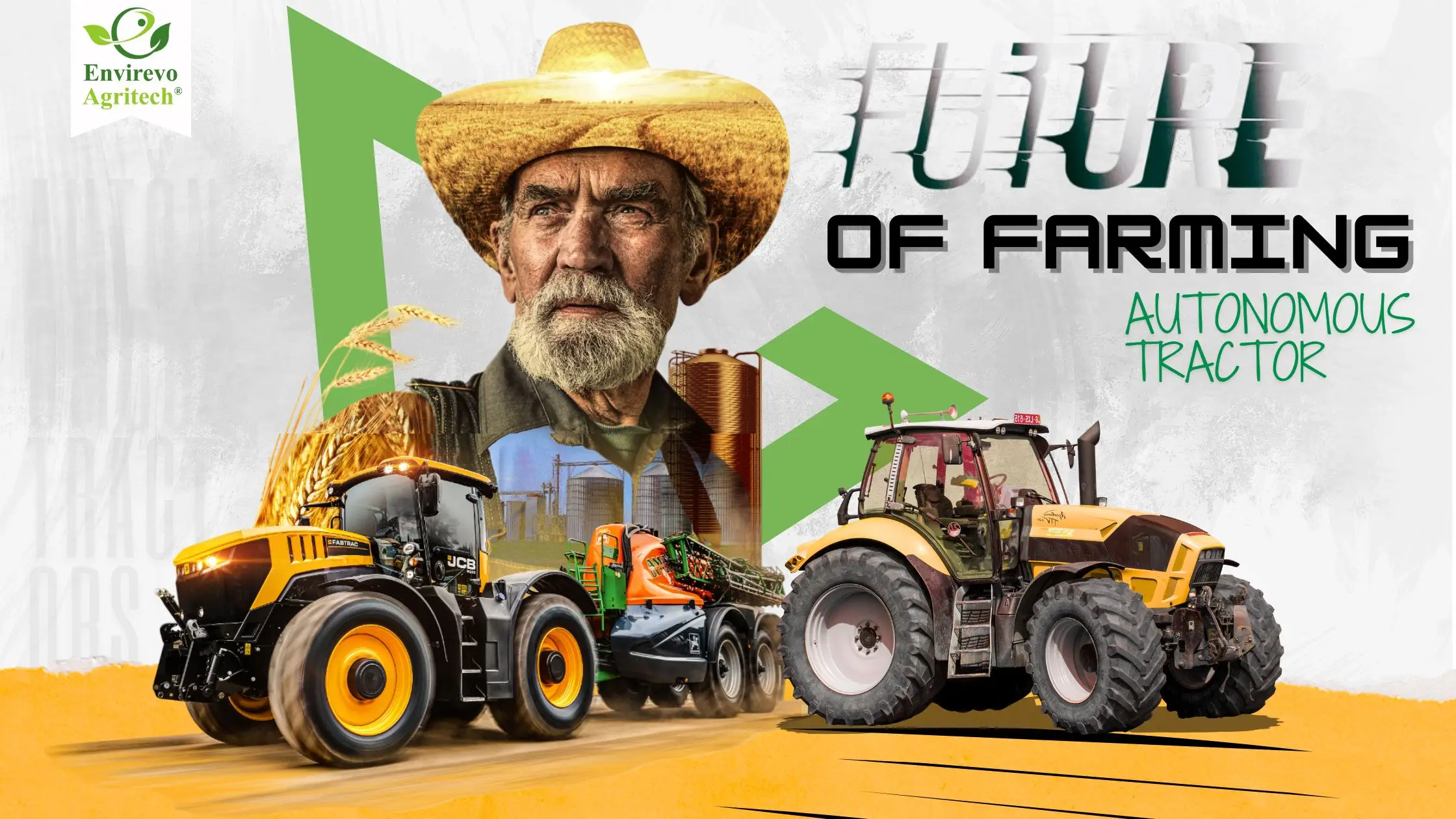Table of Contents
The future of farming has arrived—quietly humming across cornfields and cotton rows. Autonomous tractors, once considered science fiction, are now making their way onto American fields. These machines are not only transforming the way crops are planted and harvested but also addressing some of the most pressing challenges facing U.S. agriculture today.
In this comprehensive blog, we explore the early adoption of autonomous tractors in the United States. We’ll look at the benefits, challenges, real-life case studies, and the future outlook of this groundbreaking technology. Whether you’re a tech-savvy farmer, an agtech enthusiast, or someone curious about the next big thing in agriculture, this article is for you.
The Rise of Autonomous Tractors in U.S. Agriculture
What Are Autonomous Tractors?
Autonomous tractors are self-driving agricultural machines equipped with advanced technologies like GPS, AI, computer vision, and IoT sensors. These tractors can plow, plant, spray, and harvest without a human driver in the cab. Controlled remotely or through predefined routes, they ensure precision and consistency unmatched by manual labor.
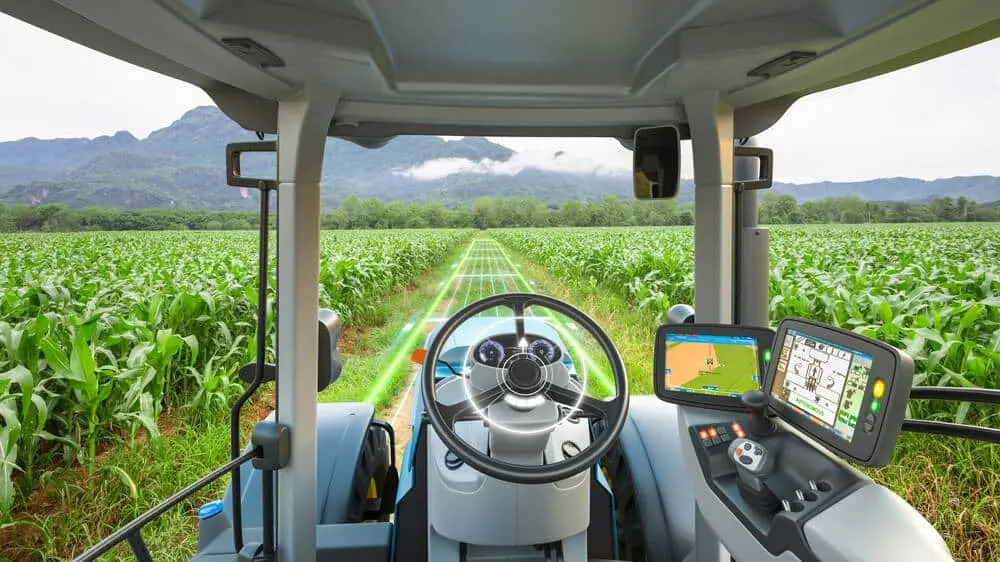
Technological Advancements Fueling Growth
The surge in autonomy is a result of several converging technologies:
- RTK GPS (Real-Time Kinematic): Offers centimeter-level accuracy for field operations.
- AI & Machine Learning: Allows tractors to detect obstacles, make decisions, and improve performance over time.
- LiDAR and Camera Systems: Help in obstacle detection and terrain mapping.
- 5G and IoT Integration: Enables real-time data transmission and remote control.
Market Growth & Adoption Trends
According to market research, the global autonomous tractor market is projected to grow from $2.5 billion in 2023 to $7.1 billion by 2030. In the U.S., early adoption is most prominent in states like Iowa, Nebraska, California, and Texas—regions where large-scale farming operations are common.
A handful of manufacturers are leading the charge:
- John Deere: Introduced its fully autonomous 8R tractor in 2022.
- CNH Industrial (Case IH & New Holland): Investing heavily in autonomous systems.
- Kubota & Monarch Tractor: Focusing on compact autonomous machines for specialty and organic farms.
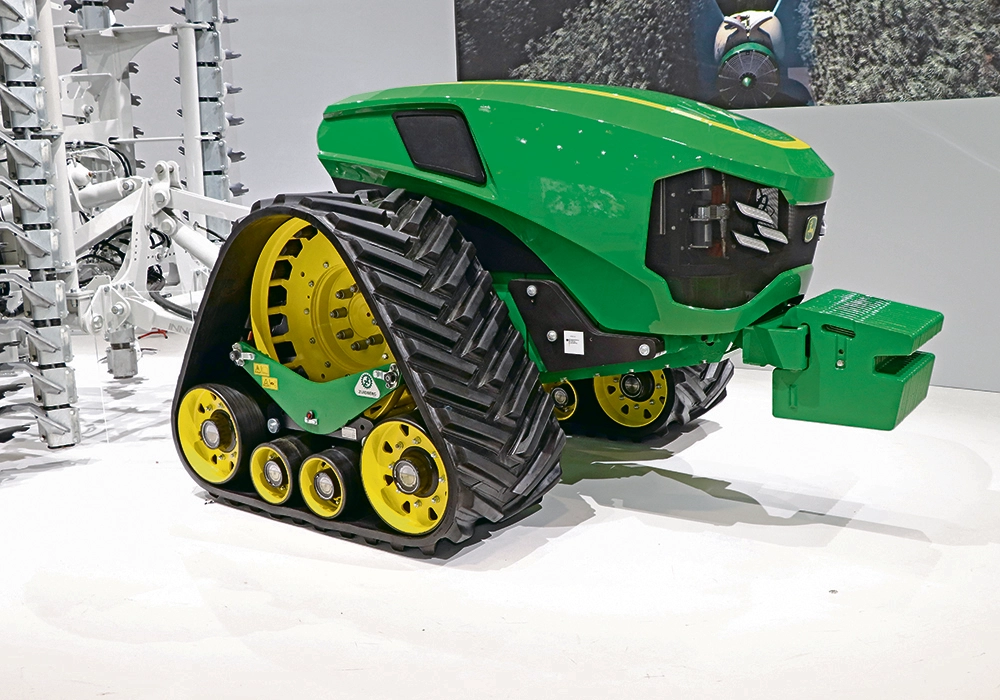
Benefits of Early Adoption
Increased Efficiency and Productivity
Autonomous tractors can operate 24/7, eliminating downtime and allowing farmers to make the most of tight planting or harvest windows. Precision control ensures optimal seed placement, reduced overlaps, and consistent application of fertilizers and pesticides.
Addressing Labor Shortages
Labor scarcity is one of the most acute problems in agriculture. In 2023, the U.S. had over 250,000 unfilled farmworker positions. Autonomous machinery reduces dependency on seasonal labor and helps maintain productivity even when workforce availability dips.
Long-Term Cost Savings
While the upfront cost of an autonomous tractor can be steep—often $300,000 or more—long-term savings in fuel, labor, and maintenance quickly balance the scale. Fewer labor hours, reduced human error, and optimized input usage mean more efficient operations and higher ROI.
Environmental Benefits
Precision agriculture facilitated by autonomous tractors reduces:
- Fuel consumption (through optimized routes and idle time)
- Fertilizer and pesticide runoff (through accurate application)
- Soil compaction (through reduced unnecessary passes)
These benefits align with growing demands for climate-smart agriculture.
Challenges Faced by Early Adopters
High Initial Investment
Autonomous tractors represent a significant financial commitment, which can be a deterrent for small to mid-sized farms. Although leasing models and federal incentives are emerging, accessibility remains an issue.
Technical and Mechanical Complexity
These machines require regular calibration, software updates, and high-quality connectivity (often 4G/5G or satellite). In rural areas with limited internet access, this can be a deal-breaker. Additionally, local mechanics often lack the training to troubleshoot such advanced systems.
Regulatory and Legal Concerns
Current regulations around autonomous vehicles on public roads are ambiguous. Autonomous tractors used in confined private fields are mostly unregulated, but transporting them or operating near highways can raise compliance questions.
Data Privacy and Ownership
Modern tractors collect vast amounts of data on soil health, yields, weather, and more. Farmers are increasingly concerned about how this data is stored, shared, or monetized by manufacturers and third-party platforms.
Case Studies: Success Stories from the Field
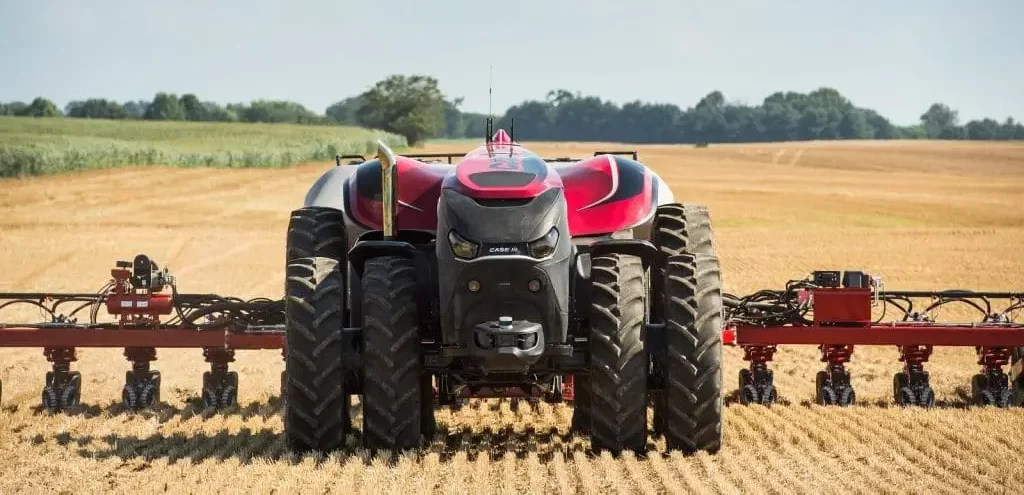
1. Midwest Grain Farm – Iowa
Ben Carlson, a fifth-generation farmer, integrated John Deere’s autonomous 8R tractor for planting and tillage. The result? A 12% reduction in diesel use and 17% improved planting efficiency. “I could monitor and control the tractor from my iPad at home,” he reports.
2. California Vineyard – Napa Valley
Monarch Tractor’s electric autonomous machine has revolutionized grape cultivation for Silver Oak Vineyards. The tractor works quietly among narrow vineyard rows and collects data on vine health. The vineyard reported better grape uniformity and reduced labor costs by 40%.
3. Texas Cotton Farm – Lubbock
Utilizing Case IH’s automation suite, the Thompson family integrated autonomous sprayers. By scheduling operations during optimal weather windows at night, they reduced pesticide use by 25% and minimized leaf scorching.
The Future of Autonomous Farming in America
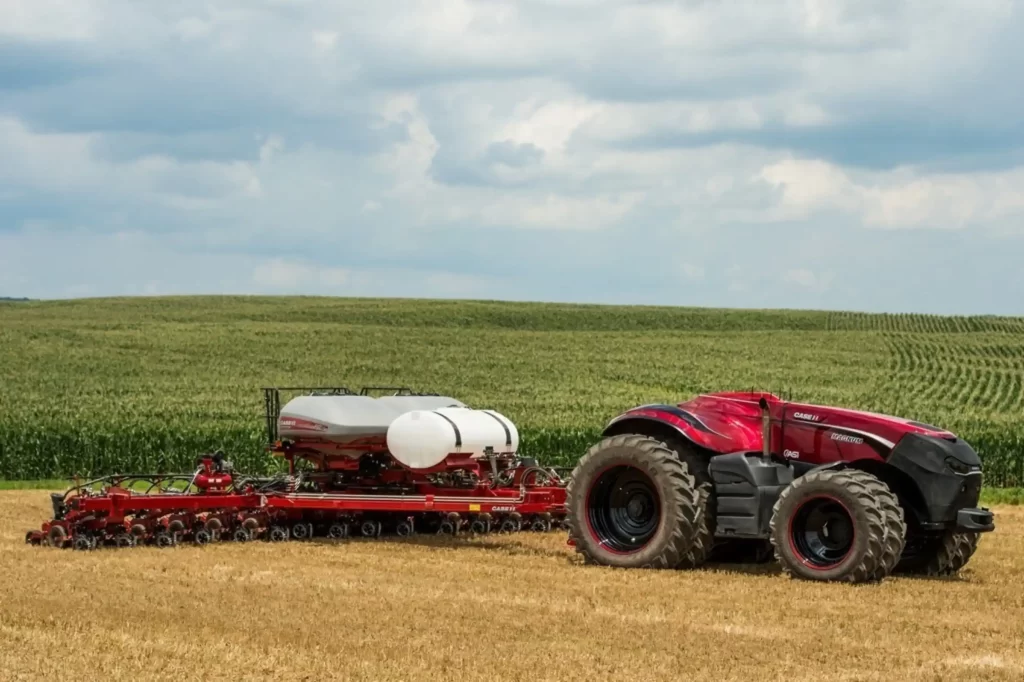
Emerging Innovations
- Swarm Technology: Multiple small autonomous units working together.
- Remote Fleet Management: One operator controlling several machines.
- Self-Learning Algorithms: Continuous improvement through machine learning.
Market Projections
Experts anticipate that over 20% of large-scale U.S. farms will integrate autonomous machinery by 2030. This number is expected to rise as prices decrease and public-private partnerships ease the entry barriers.
Regulatory Developments
USDA and DOT are collaborating to create frameworks for autonomous agricultural equipment, focusing on safety, liability, and data use. Legislation such as the “Agri-Tech Innovation Act” (proposed 2024) could pave the way for subsidies and training programs.
Integration with Smart Farming Ecosystems
Autonomous tractors are just one component of a larger precision agriculture movement:
- Drones for aerial imaging and crop health monitoring
- Soil sensors for real-time nutrient mapping
- Weather stations for localized forecasting
- IoT dashboards for unified control
The convergence of these technologies offers unprecedented control over the entire farming lifecycle.
Conclusion
Autonomous tractors are no longer futuristic prototypes—they’re here, and they’re changing the game for American agriculture. While early adopters face real challenges, the rewards in terms of efficiency, sustainability, and productivity are undeniable.
As more farms embrace these machines, the sector is poised for a seismic shift. From the rolling plains of Texas to the vineyards of California, autonomous tractors are turning soil and turning heads. Whether you’re a farmer ready to invest or an enthusiast tracking innovation, one thing is clear: the future of farming is autonomous.
Further Reading
- USDA Report on Precision Agriculture (2023)
- John Deere’s Autonomous 8R Tractor
- CNH Industrial Automation Strategies
Frequently Asked Questions (FAQ)
1. Are autonomous tractors safe to use around humans and livestock?
Yes, most modern autonomous tractors are equipped with advanced sensors, LiDAR, and AI-based obstacle detection systems. These allow the machine to detect and stop for people, animals, or unexpected objects in their path. However, safety protocols and operator oversight are still recommended, especially during early adoption.
2. Can autonomous tractors work on all types of terrain and crops?
Currently, autonomous tractors are best suited for flat, open fields and row crops like corn, soybeans, and wheat. Hilly, irregular, or densely planted fields (e.g., orchards) can pose challenges, though newer models are improving terrain adaptability and crop flexibility.
3. Do I need an internet connection for the tractor to function?
Basic autonomous operations can function offline using GPS, but advanced features—like real-time monitoring, remote diagnostics, and software updates—often require reliable cellular or satellite connectivity. In areas with limited internet, satellite-linked solutions are emerging.
4. How does maintenance work on autonomous tractors?
Maintenance is similar to conventional tractors but with added emphasis on sensors, software, and connectivity modules. Manufacturers typically offer remote diagnostics, over-the-air (OTA) updates, and specialized service teams. However, finding locally trained technicians can still be a limitation.
5. What happens if the tractor encounters unexpected weather or field conditions?
Autonomous tractors rely on onboard sensors and pre-programmed logic to pause operations during adverse weather. Some systems integrate weather forecasting and soil condition monitoring, allowing the tractor to make autonomous decisions or notify the operator remotely.
6. Is there a leasing or subscription model for autonomous tractors?
Yes. Companies like Monarch Tractor and John Deere now offer leasing options or machinery-as-a-service models to reduce the financial burden of upfront purchases. These often include software, maintenance, and support in the subscription.
7. How do I train my team to operate or supervise autonomous tractors?
Most manufacturers provide onboarding, remote training sessions, and digital documentation. Some also offer mobile apps for easy supervision. Additionally, agricultural extension programs and community colleges are starting to include autonomous equipment in their curriculum.
8. Are there government incentives or subsidies for adopting autonomous farming equipment?
While there are no federal subsidies specific to autonomous tractors (as of 2025), many precision agriculture technologies qualify for conservation grants, state-level innovation funding, or cost-sharing programs under USDA initiatives. This is expected to expand in the coming years.
9. Can autonomous tractors integrate with my existing farm management system?
Yes, most leading brands offer API support or are compatible with platforms like John Deere Operations Center, Trimble Ag Software, or Ag Leader. This allows seamless integration for data sharing, planning, and yield mapping.
10. What is the expected lifespan of an autonomous tractor compared to a traditional one?
While still being evaluated, autonomous tractors are expected to have a similar or slightly longer lifespan (10–15 years), primarily because they reduce operator-related wear-and-tear and optimize fuel and input use. However, longevity also depends on software upkeep and component durability.
